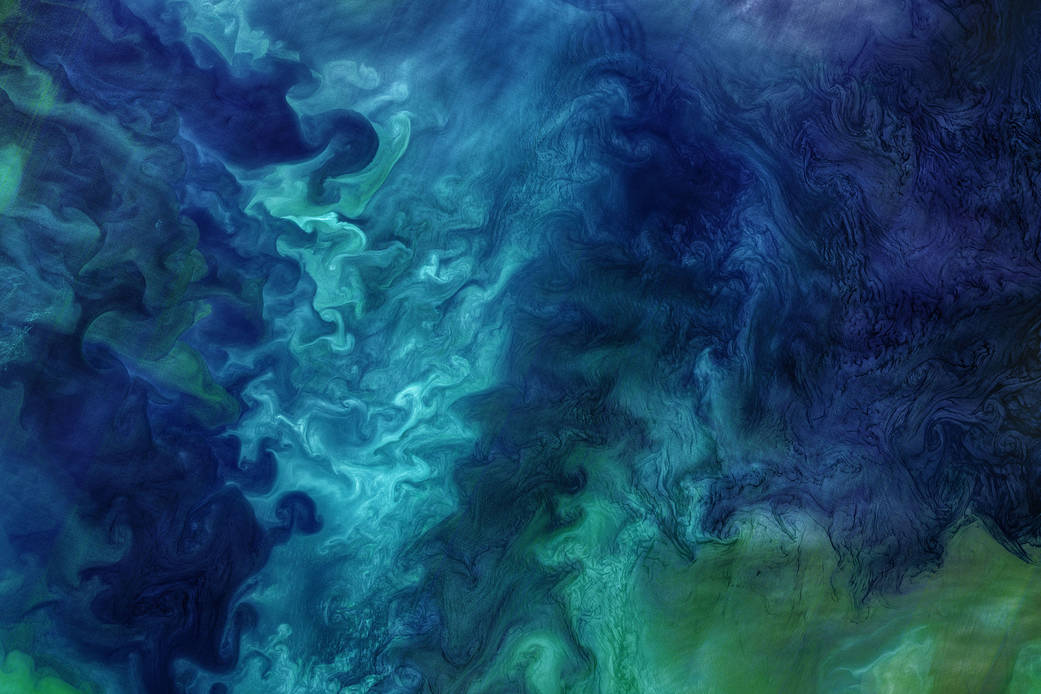
Regardless of the amount of winter ice cover, the waters off of the Alaskan coast usually come alive each spring with blooms of phytoplankton. These blooms can form striking patterns of blue and green seawater, such as those visible in this image of the Chukchi Sea acquired on June 18, 2018, by the Operational Land Imager (OLI) on Landsat 8.
Blooms are a common occurrence this time of year. But the regularity of the blooms and their simple beauty belie the complexity of this ecosystem.
Two main water masses flow from the Bering Strait and enter the southern Chukchi. One type, known as “Bering Sea Water,” is cool, salty, and rich in nutrients. This water fuels most of the phytoplankton growth, primarily diatoms, which are likely the main reason for the colorful green waters pictured here. (Sediments could also be contributing to the bright green areas.)
The second mass of seawater is known as “Alaskan Coastal Water,” which is warmer, less salty, and nutrient-poor. Diatom growth is usually lower in these waters, but coccolithophores can do well here. Some areas pictured here could contain this type of plankton, known to impart a milky turquoise hue to the water with their plates of calcium carbonate armor.
While experts expect blooms to consistently show up in these waters from year to year, the size is less consistent, and the reason is not clear.
Image Credit: NASA/U. S. Geological Survey/Norman Kuring/Kathryn Hansen

























